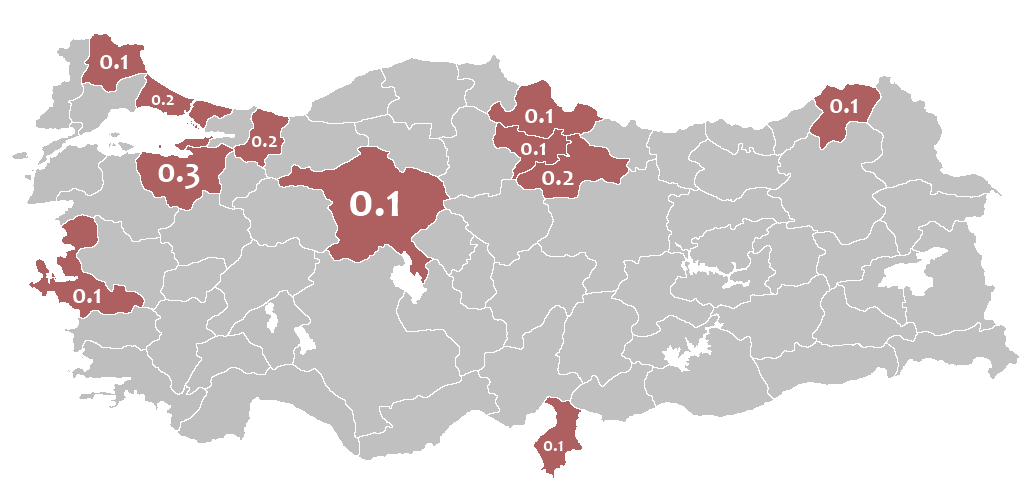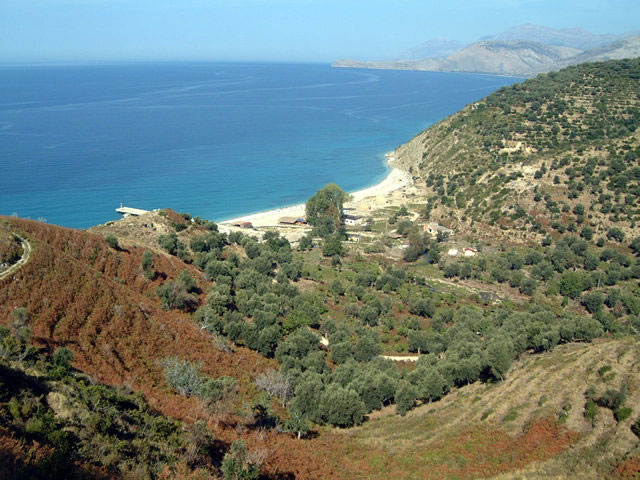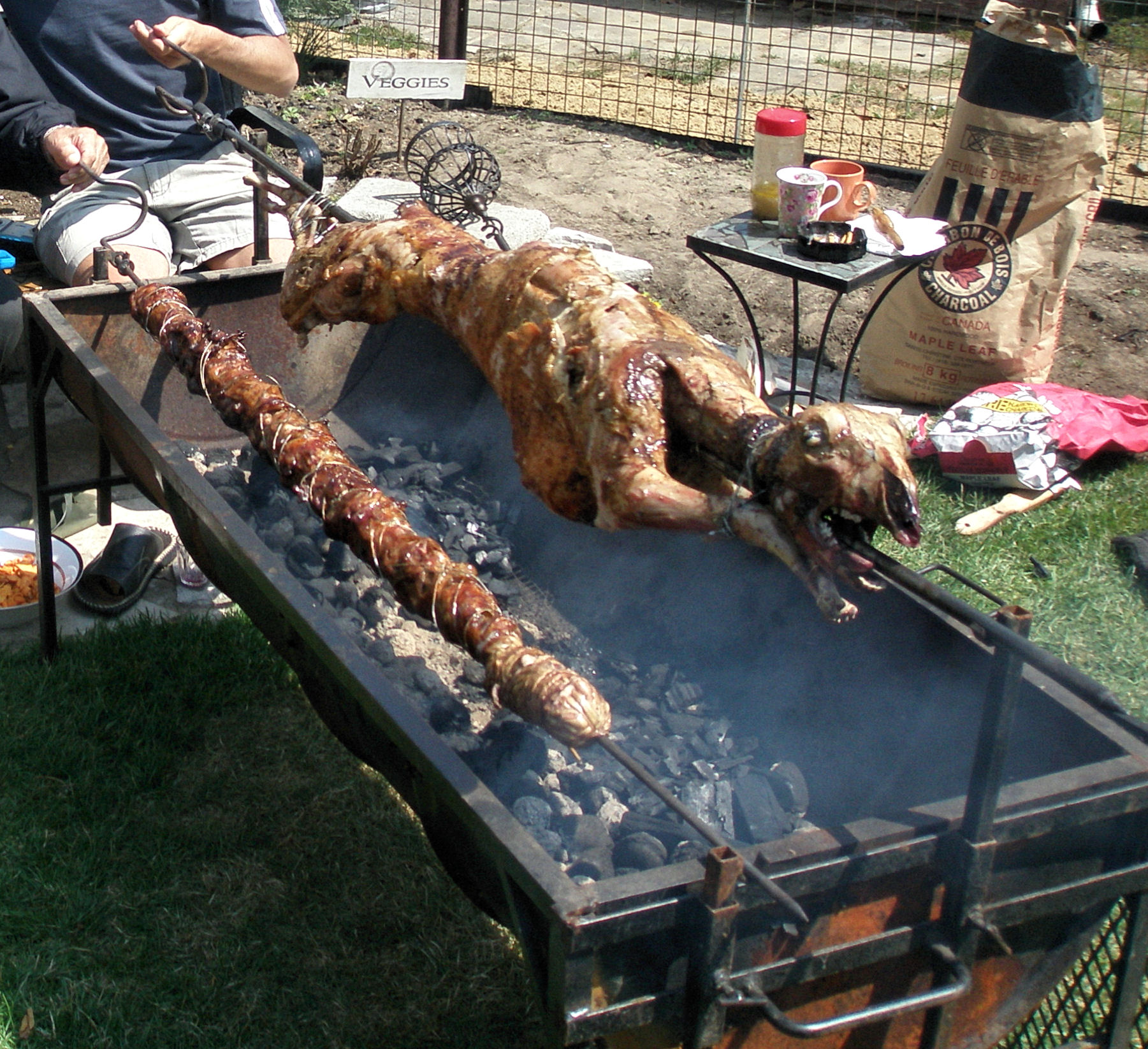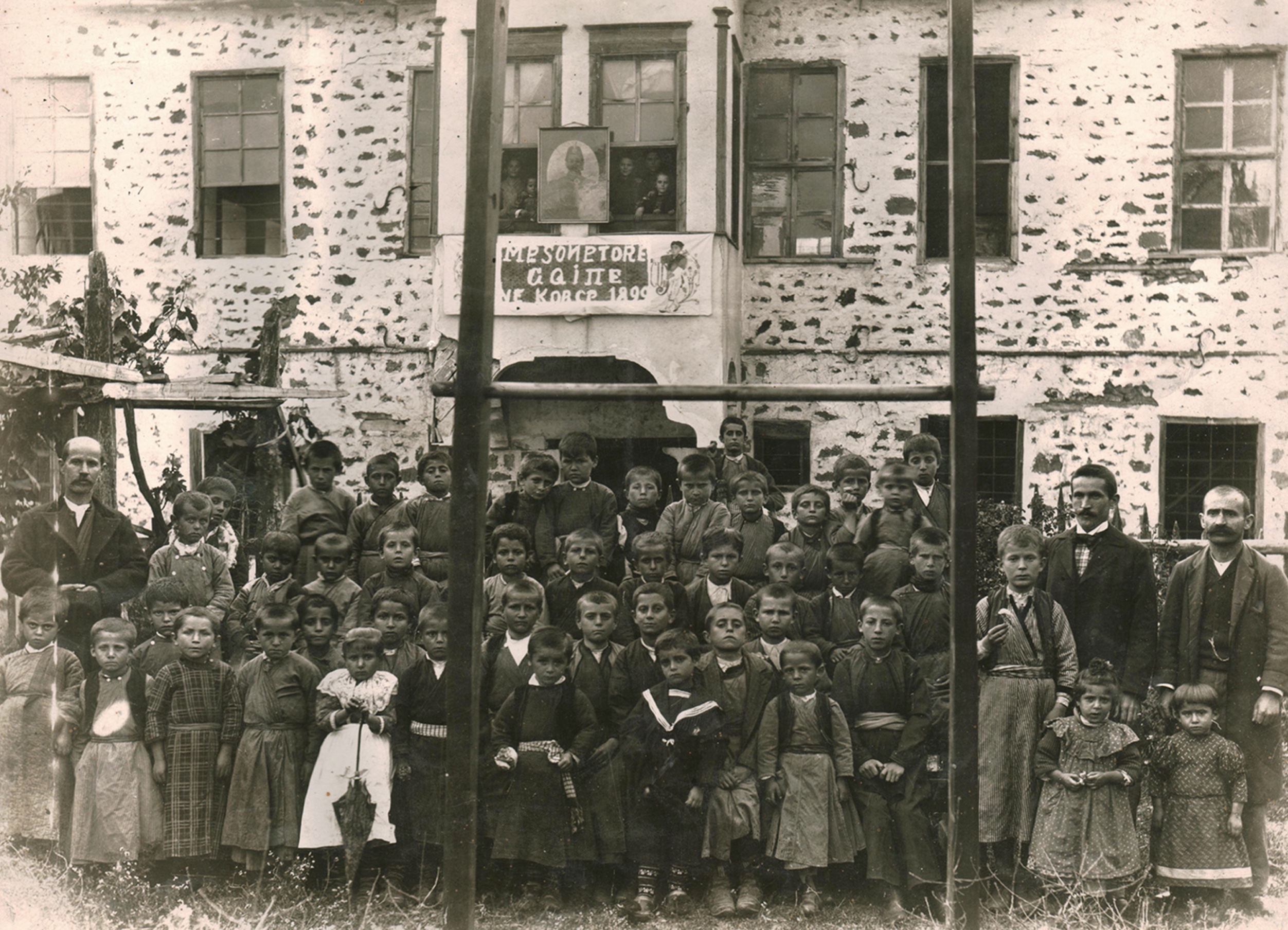|
Arnavut Ciğeri
Arnavut ciğeri (literally "Albanian liver") is a Turkish dish made of oil-fried lamb or veal liver cubes seasoned with hot pepper, served traditionally with onion and parsley. Etymology The word '' Arnavut'' (Albanian) is part of a dish in Istanbul cuisine known as ''Arnavut ciğeri'' (Albanian liver). History The origins of ''Arnavut ciğeri'' lie in the fifteenth century and the aftermath of wars in what became the Ottoman Balkans (Rumelia) and the immigration of Albanians to the Istanbul region. "Kültürümüzün temel taşlarından olan semtlere (Arnavutköy, Arnavutkaldırımı), yemeklerimize (Arnavut ciğeri), kişilik özelliklerine (Arnavut inadı) adını verdiğimiz Arnavutların, Anadolu’ya ilk göçleri, yaşadıkları Arnavutluk toprağının Osmanlı Devleti yönetimine geçmesiyle başlamıştır." People traveling from the Balkans to Ottoman Anatolia imparted their influences on the area such as Albanians who became employed as mobile sellers of raw liver ... [...More Info...] [...Related Items...] OR: [Wikipedia] [Google] [Baidu] |
Turkey
Turkey, officially the Republic of Türkiye, is a country mainly located in Anatolia in West Asia, with a relatively small part called East Thrace in Southeast Europe. It borders the Black Sea to the north; Georgia (country), Georgia, Armenia, Azerbaijan, and Iran to the east; Iraq, Syria, and the Mediterranean Sea to the south; and the Aegean Sea, Greece, and Bulgaria to the west. Turkey is home to over 85 million people; most are ethnic Turkish people, Turks, while ethnic Kurds in Turkey, Kurds are the Minorities in Turkey, largest ethnic minority. Officially Secularism in Turkey, a secular state, Turkey has Islam in Turkey, a Muslim-majority population. Ankara is Turkey's capital and second-largest city. Istanbul is its largest city and economic center. Other major cities include İzmir, Bursa, and Antalya. First inhabited by modern humans during the Late Paleolithic, present-day Turkey was home to List of ancient peoples of Anatolia, various ancient peoples. The Hattians ... [...More Info...] [...Related Items...] OR: [Wikipedia] [Google] [Baidu] |
Evliya Çelebi
Dervish Mehmed Zillî (25 March 1611 – 1682), known as Evliya Çelebi (), was an Ottoman Empire, Ottoman explorer who travelled through his home country during its cultural zenith as well as neighboring lands. He travelled for over 40 years, recording his commentary in a travel literature, travelogue called the ''Seyahatnâme'' ("Book of Travel"). The name Çelebi#Title, Çelebi is an honorific meaning "gentleman" or "man of God". Life Evliya Çelebi was born in Istanbul in 1611 to a wealthy family from Kütahya. Both his parents were attached to the Ottoman Empire, Ottoman court, his father, Dervish Mehmed Zilli, as a jeweller, and his mother as an Abkhazians, Abkhazian relation of the Grand Vizier of Mehmed IV Melek Ahmed Pasha. In his book, Evliya Çelebi traces his paternal genealogy back to Ahmad Yasawi, the earliest known Turkic poet and an early Sufi mystic. Evliya Çelebi received a court education from Ulama#Ottoman era, the Imperial ''ulama'' (scholars). He may have j ... [...More Info...] [...Related Items...] OR: [Wikipedia] [Google] [Baidu] |
Jerusalem Mixed Grill
Jerusalem mixed grill () is a grilled meat dish considered a specialty of Jerusalem. It consists of chicken hearts, spleens and liver mixed with bits of lamb cooked on a flat grill, seasoned with onion, garlic, black pepper, cumin, turmeric, olive oil and coriander. The dish is said to have been invented at the Mahane Yehuda Market, with various restaurants claiming to be the originators. In 2009, Israeli chefs created a giant portion that weighed in at 440 pounds (200 kilos), winning a Guinness world record for the largest Jerusalem mixed grill. They also prepared the world's smallest dish: Jerusalem mixed grill in a pita the size of a coin. According to the late ''Haaretz'' food critic Daniel Rogov, world-renowned chefs have pleaded with one of the steakhouses, Sima, for the recipe, which includes a secret ingredient described as "Georgian pepper". A variation of the dish may have the meorav Yerushalmi thinly chopped and then rolled into phyllo cigars which are then fried; ... [...More Info...] [...Related Items...] OR: [Wikipedia] [Google] [Baidu] |
Tjvjik (food)
Tjvjik, tzhvzhik or dzhvzhig () is an Armenian dish which is mainly based on liver (lamb, beef, pork or chicken). In addition to liver it can include any other offal. It is considered an easy dish to prepare. Etymology From ("to make hissing sounds") + -իկ (diminutive suffix), probably because of the sound of frying. Preparation and ingredients After unwrapping the liver, the bile is removed, and the lungs are washed. The kidneys are also unwrapped and cut in half. The esophagus is turned inside out and well-washed. Prepared offal and tail fat are washed, cut into equal pieces, put in a pan and fried until half-cooked. Then chopped onion is added, along with tomato purée (optional), salt, and pepper. The pan should be covered with a lid to cook tjvjik until tender. The dish is usually served with parsley. Tjvjik-with-mung-sprouts.png, Tjvjik with mung sprouts In popular culture In the story of the writer Atrpet (Sarkis Mubaiyajyan), the plot revolves around a ... [...More Info...] [...Related Items...] OR: [Wikipedia] [Google] [Baidu] |
List Of Turkish Dishes
Turkish cuisine () is largely the heritage of Ottoman cuisine, Ottoman cuisine (Osmanlı mutfağı), European influences, Seljuk Empire, Seljuk cuisine and the Turkish diaspora. Turkish cuisine with traditional Turkic peoples, Turkic elements such as yogurt, ayran, kaymak, gains influences from Mediterranean cuisine, Mediterranean, Balkan cuisine, Balkan, Middle Eastern cuisine, Middle Eastern, Central Asian cuisine, Central Asian and Eastern European cuisine, Eastern European cuisines. Turkish cuisine shows variation across Turkey. The cooking of Istanbul, Bursa, İzmir, and the rest of the Anatolia region inherits many elements of Ottoman court cuisine, including moderate use of spices, a preference for rice over bulgur, koftes, and a wider availability of vegetable stews (''türlü''), eggplant, stuffed dolmas and fish. The cuisine of the Black Sea Region uses fish extensively, especially the European anchovy, Black Sea anchovy (''hamsi'') and includes maize dishes. The cuisi ... [...More Info...] [...Related Items...] OR: [Wikipedia] [Google] [Baidu] |
Albanians In Turkey
Albanians in Turkey (; ) are ethnic Albanian citizens and denizens of Turkey. They consist of Albanians who arrived during the Ottoman period, Kosovar/ Macedonian and Tosk Cham Albanians fleeing from Serbian and Greek persecution after the beginning of the Balkan Wars, alongside some Albanians from Montenegro and Albania proper. A 2008 report from the Turkish National Security Council (MGK) estimated that approximately 1.3 million people of Albanian ancestry live in Turkey, and more than 500,000 recognizing their ancestry, language and culture. There are other estimates however that place the number of people in Turkey with Albanian ancestry and background upward to 5 or 6 million. History The Ottoman period that followed in Albania after the end of Skanderbeg's resistance was characterized by a great change. Many Albanians gained prominent positions in the Ottoman government such as: Iljaz Hoxha, Hamza Kastrioti, Koca Davud Pasha, Zağanos Pasha, Köprülü Mehmed Pasha ... [...More Info...] [...Related Items...] OR: [Wikipedia] [Google] [Baidu] |
Albanian Cuisine
Albanian cuisine is a representative of the cuisine of the Mediterranean cuisine, Mediterranean. It is also an example of the Mediterranean diet based on the importance of olive oil, fruits, vegetables, and fish. The cooking traditions of the Albanian people are diverse in consequence of the environmental factors that are more importantly suitable for the cultivation of nearly every kind of herbs, vegetables, and fruits. Olive oil is the most ancient and commonly used vegetable fat in Albanian cooking, produced since Classical antiquity, antiquity throughout the country particularly along the coasts. Hospitality is a fundamental custom of Albanian society and serving food is integral to the hosting of guests and visitors. It is not infrequent for visitors to be invited to eat and drink with locals. The medieval Albanian Kanun (Albania), code of honor, called Besa (Albanian culture), ''besa'', resulted to look after guests and strangers as an act of recognition and gratitude. Alb ... [...More Info...] [...Related Items...] OR: [Wikipedia] [Google] [Baidu] |
Ottoman Cuisine
Ottoman cuisine is the cuisine of the Ottoman Empire and its continuation in the cuisines of Greece, Turkey, the Balkans, Caucasus, Middle East and Northern Africa. Sources The Ottoman palace kitchen registers (''matbah-i amire defterleri'') are important primary sources for studies of early modern Ottoman cuisine containing information on ingredients and names of food dishes cooked by the palace kitchens. Many cookbooks were published beginning in the 19th century reflecting the cultural fusions that characterized the rich cuisine of Istanbul's elites in the Late Ottoman period as new ingredients like tomatoes became widely available. There are few extant recipe collections before this era. The earliest Ottoman cookbook is credited to Muhammad Shirvânî's 15th-century expansion of the earlier Arabic ''Kitab al-Tabikh'' by Muhammad bin Hasan al-Baghdadi. '' Diwan Lughat al-Turk'' (the earliest Turkish language dictionary) is often consulted as a source for the influenc ... [...More Info...] [...Related Items...] OR: [Wikipedia] [Google] [Baidu] |
Kokoreç
Kokoretsi or kokoreç is a dish of the Balkans and Anatolia (Asia Minor), consisting of lamb or goat intestines wrapped around seasoned offal, including sweetbreads, hearts, lungs, or kidneys, and typically grilled; a variant consists of chopped innards cooked on a griddle. The intestines of suckling lambs are preferred. History and names A dish identical to modern kokoretsi is first attested in the cuisine of the Byzantines. They called it (''plektín''), (''koilióchorda''), or (''chordókoila''); the latter two are preserved with the meaning of wrapped intestines in the Greek idioms of Corfu as (''tsoilíchourda''), of Plovdiv as (''chordókoila''), of Chios as (''soilígourda''), of Pontians as (''chordógkoila''), and in part, of Zagori and Argyrades as (''chordí''), of Thessaly as (''chourdí''), of northern Peloponnese as (''kordiá'') or (''kórda''), and of Vogatsiko as (''kourdí''). Other names found in medieval texts are (''gardoúmion'') and (''gardo ... [...More Info...] [...Related Items...] OR: [Wikipedia] [Google] [Baidu] |
Turkish Cuisine
Turkish cuisine () is largely the heritage of Ottoman cuisine, Ottoman cuisine (Osmanlı mutfağı), European influences, Seljuk Empire, Seljuk cuisine and the Turkish diaspora. Turkish cuisine with traditional Turkic peoples, Turkic elements such as yogurt, ayran, kaymak, gains influences from Mediterranean cuisine, Mediterranean, Balkan cuisine, Balkan, Middle Eastern cuisine, Middle Eastern, Central Asian cuisine, Central Asian and Eastern European cuisine, Eastern European cuisines. Turkish cuisine shows variation across Turkey. The cooking of Istanbul, Bursa, İzmir, and the rest of the Anatolia region inherits many elements of Ottoman court cuisine, including moderate use of spices, a preference for rice over bulgur, koftes, and a wider availability of vegetable stews (''türlü''), eggplant, stuffed dolmas and fish. The cuisine of the Black Sea Region uses fish extensively, especially the European anchovy, Black Sea anchovy (''hamsi'') and includes maize dishes. The cuisi ... [...More Info...] [...Related Items...] OR: [Wikipedia] [Google] [Baidu] |
Argos Orestiko
Argos Orestiko (, before 1926: Χρούπιστα – ''Chroupista''; ) is a town and a municipality in the Kastoria regional unit of Macedonia, Greece. The Kastoria National Airport (also known as Aristotelis Airport) is located in Argos Orestiko. History Antiquity In antiquity, ''Argos Orestikon'' was the main town of the Orestae, in Upper Macedonia. It was said to have been founded by Orestes, the son of Agamemnon, who fled from Argos in the Peloponnese after the murder of his mother. The exact location of classical ''Argos Orestikon'' has not been found. Based on epigraphic evidence, the administrative centre of the Orestae lay near the centre of the present town Argos Orestiko, at a site named "Armenochori". During the campaign of Alexander the Great to the East, settlers from the town founded another Argos Orestikon to distant Scythian steppes during the 4th century BCE. Modern period At least since the 16th century, Argos Orestiko has a notable annual trade fair. Towa ... [...More Info...] [...Related Items...] OR: [Wikipedia] [Google] [Baidu] |
Korçë
Korçë (; sq-definite, Korça) is the List of cities and towns in Albania, eighth most populous city of Albania and the seat of Korçë County and Korçë Municipality. The total population of the city is 51,152 and 75,994 of Korçë municipality (2011 census), in a total area of . It stands on a plateau some Above mean sea level, above sea level, surrounded by the Morava Mountains. The area of the Old Bazaar of Korçë, Old Bazaar, including Mirahori Mosque, Korçë, Mirahori Mosque, is considered as the urban core of the city. Founded by the local Ottoman Empire, Ottoman Albanians, Albanian nobleman Iljaz Bej Mirahori, Ilias Bey Mirahori, the urban area of Korçë dates back to the late 15th century and the beginning of the 16th century, however its actual physiognomy was realized in the 19th century, during a period that corresponds with the rapid growth and development of the city. The Old Bazaar has played a dominant role in Albania's market history. Korçë is the larges ... [...More Info...] [...Related Items...] OR: [Wikipedia] [Google] [Baidu] |







